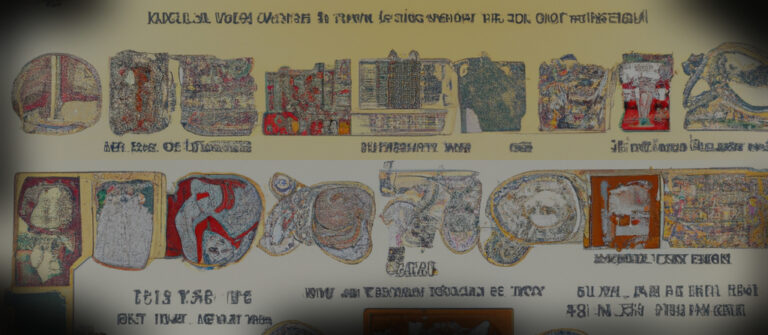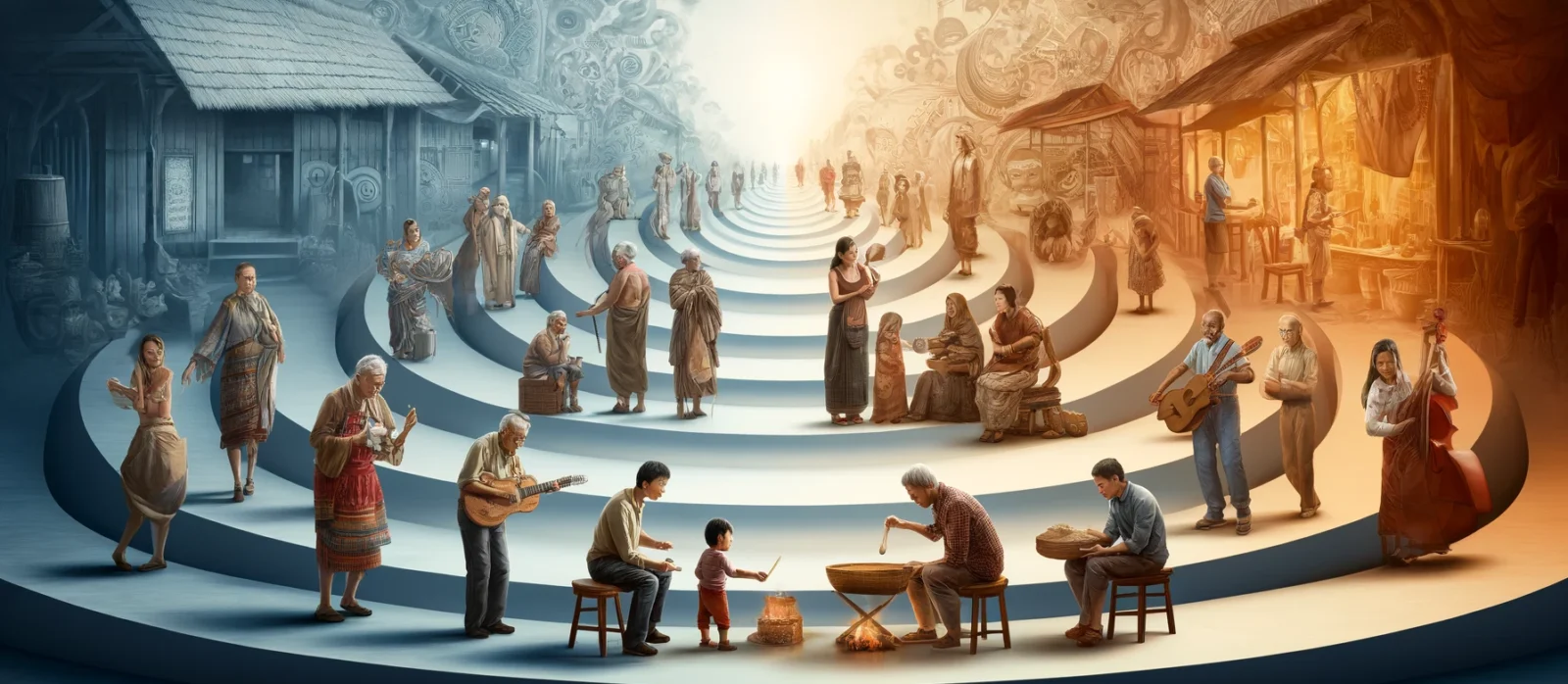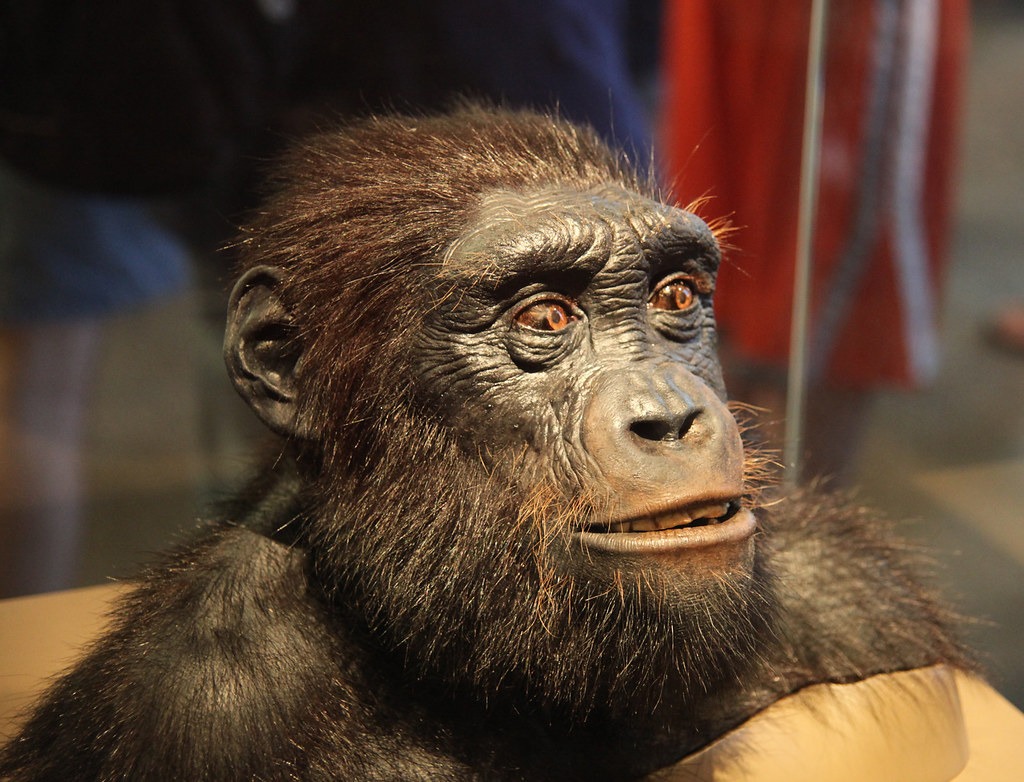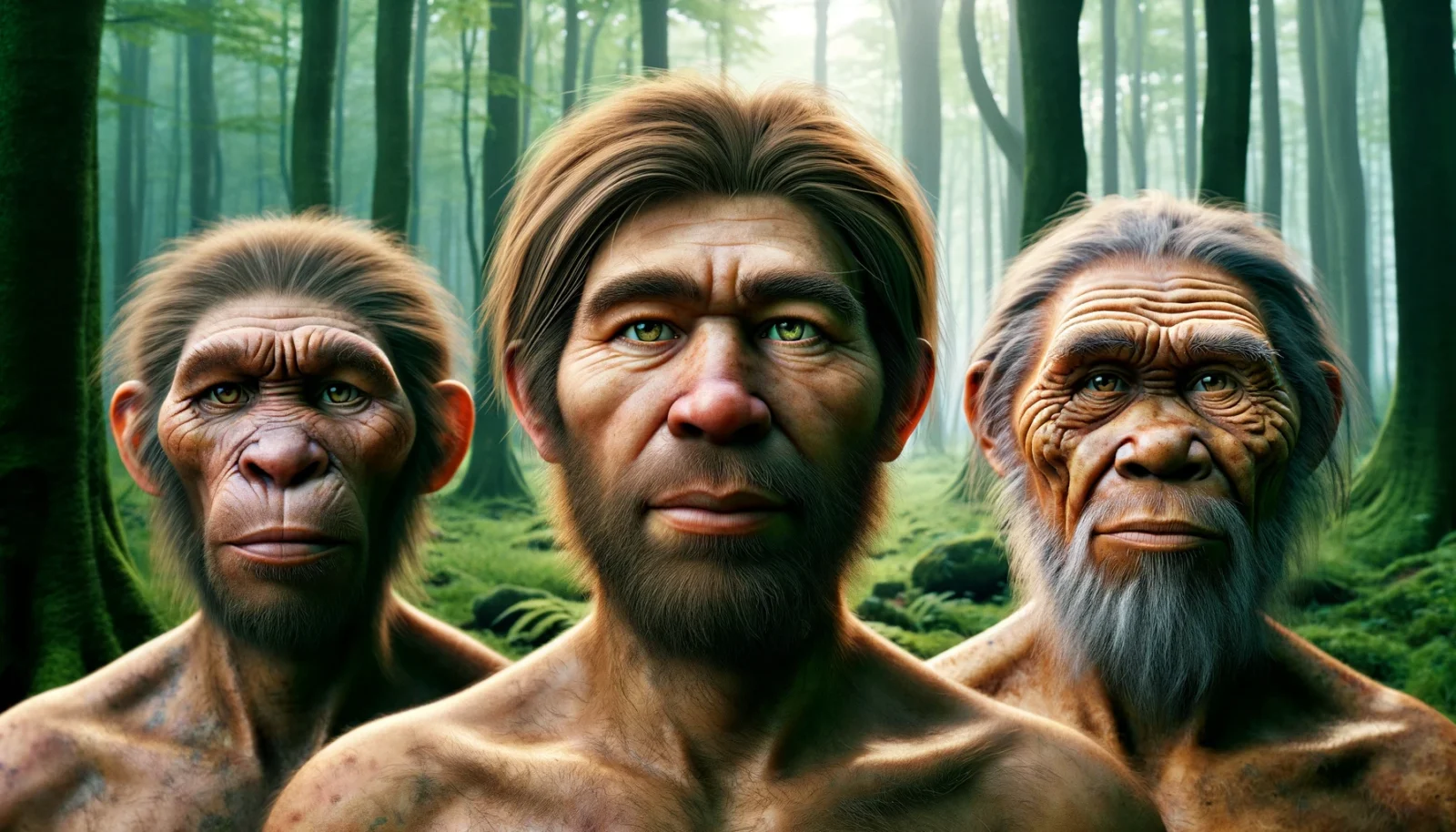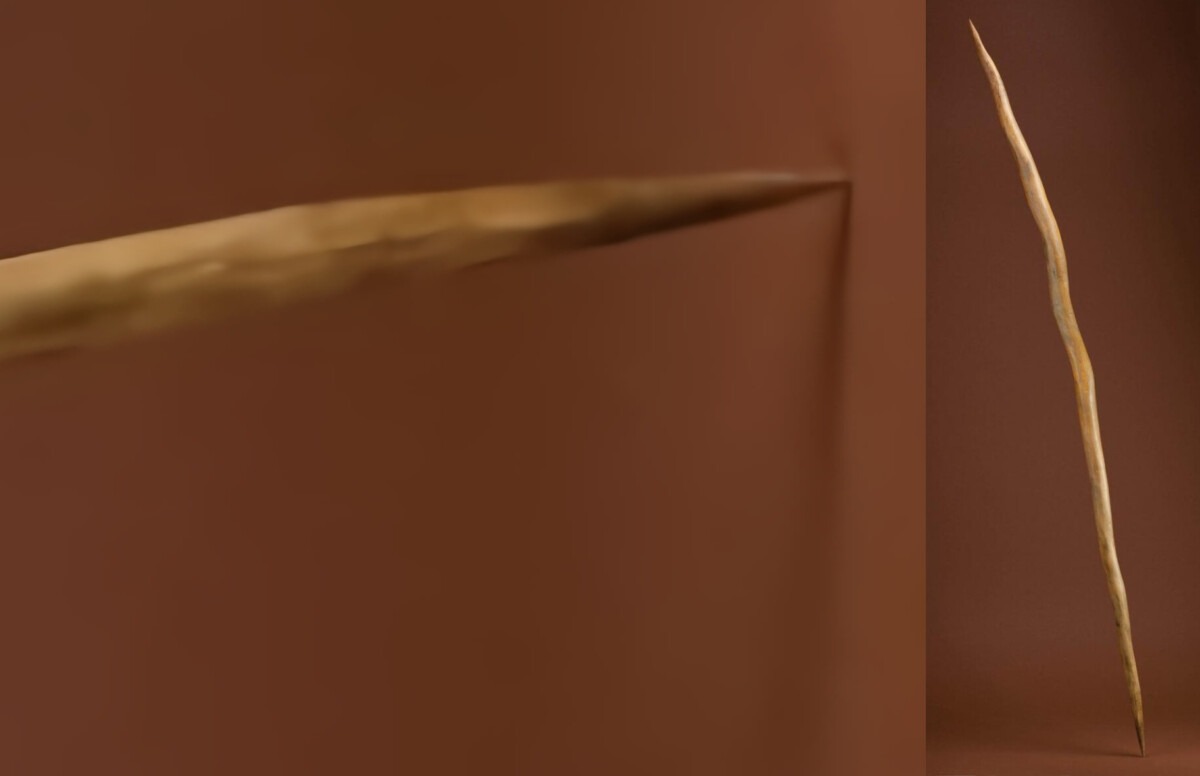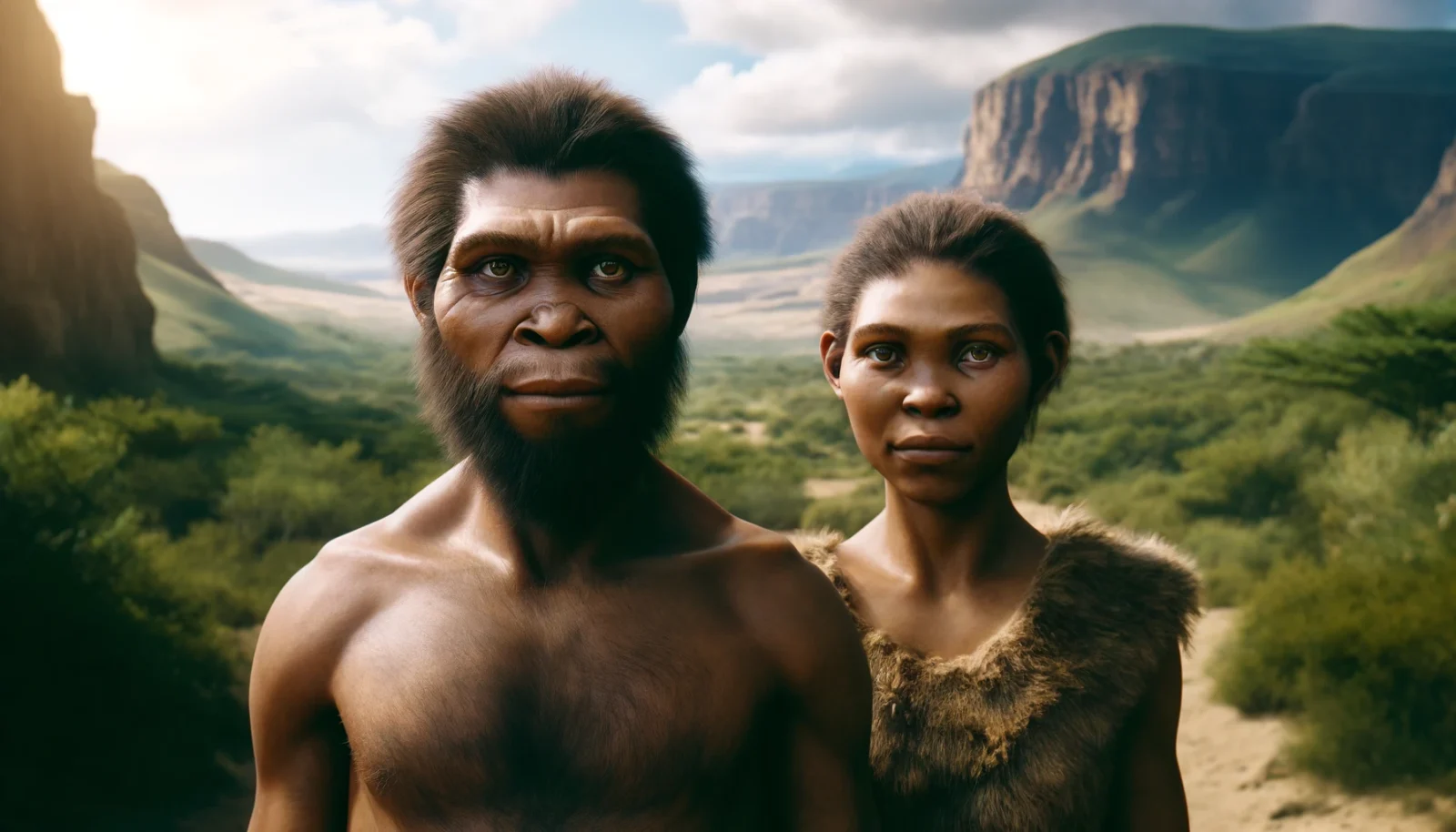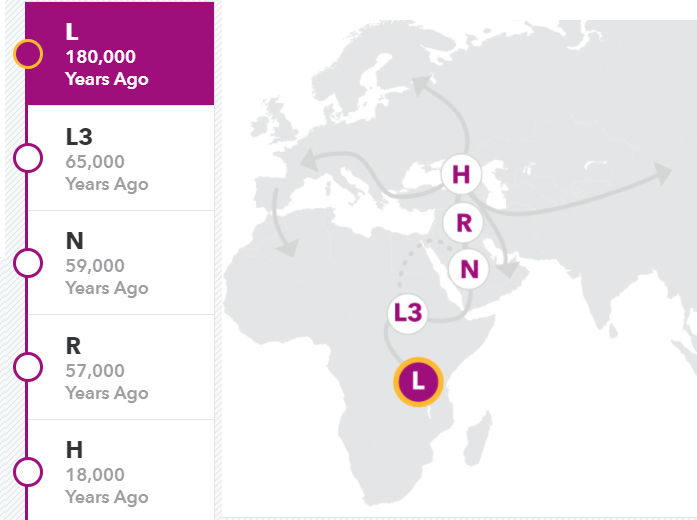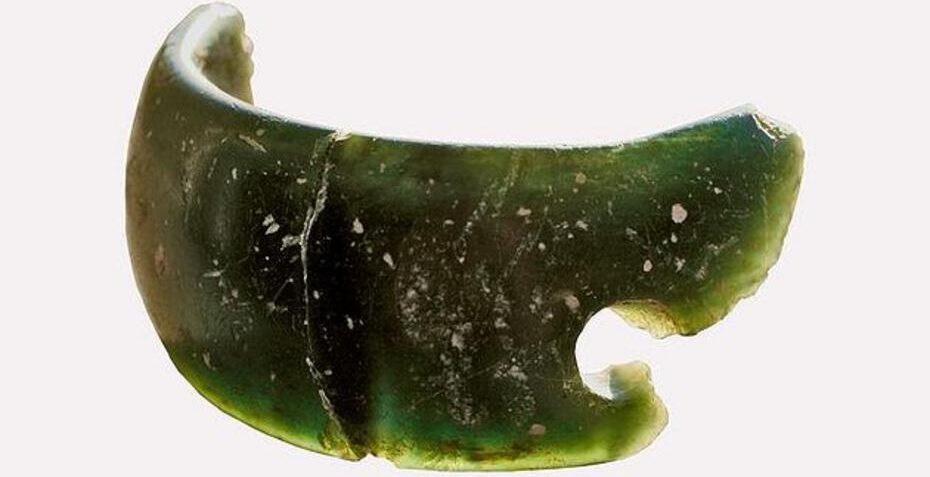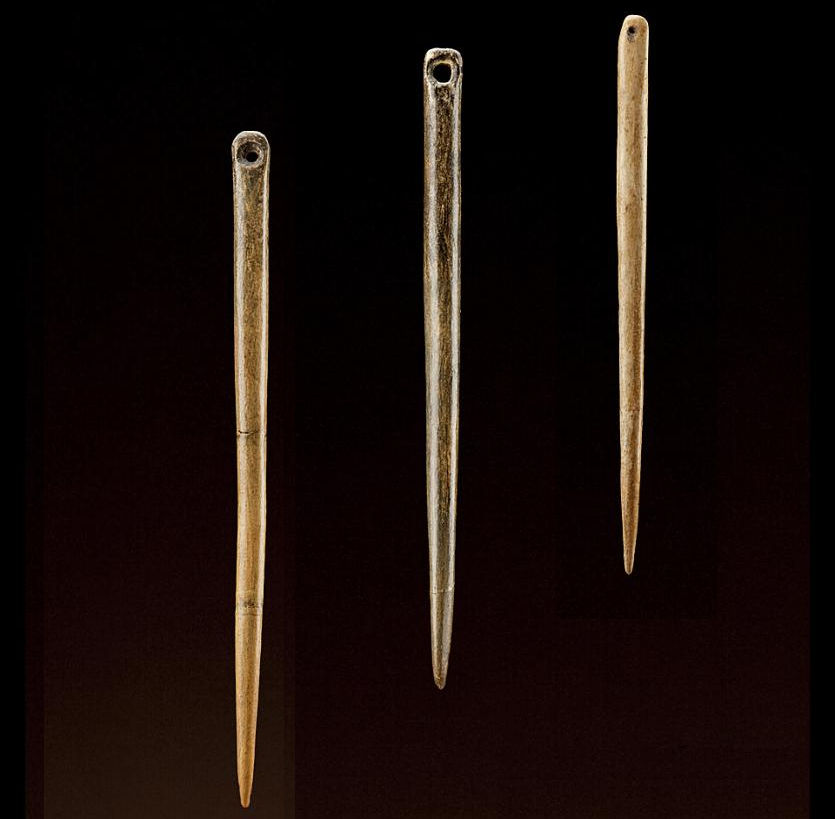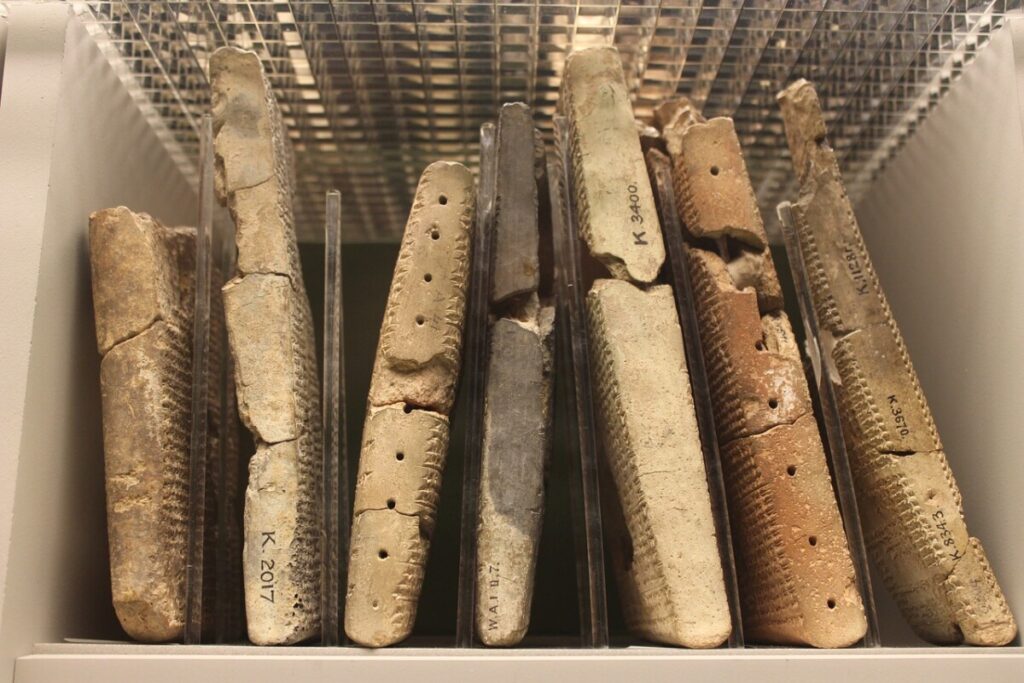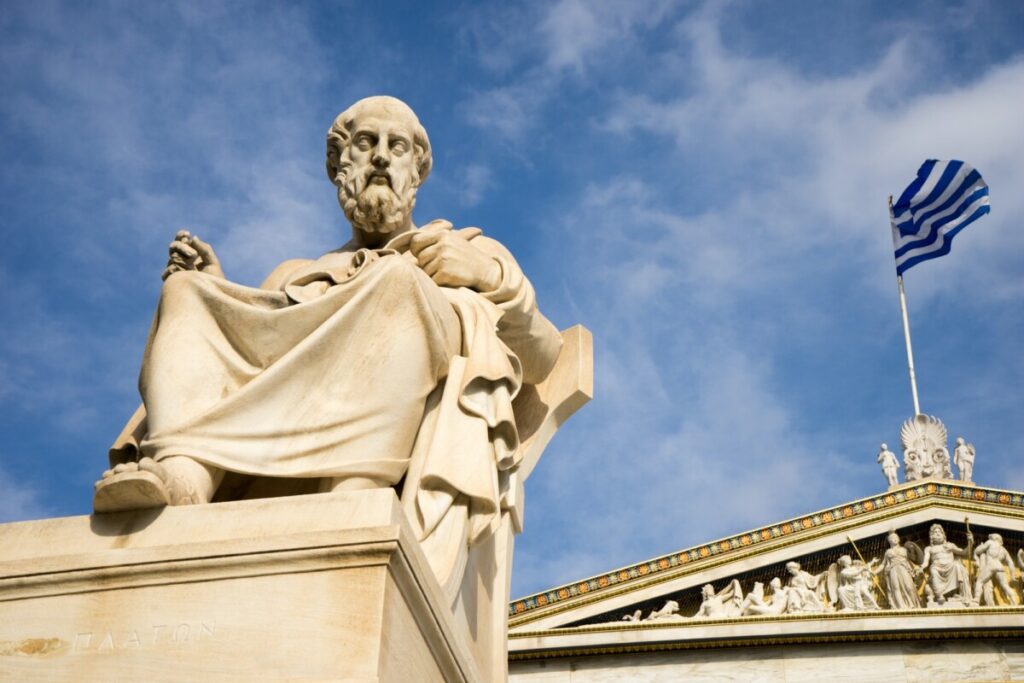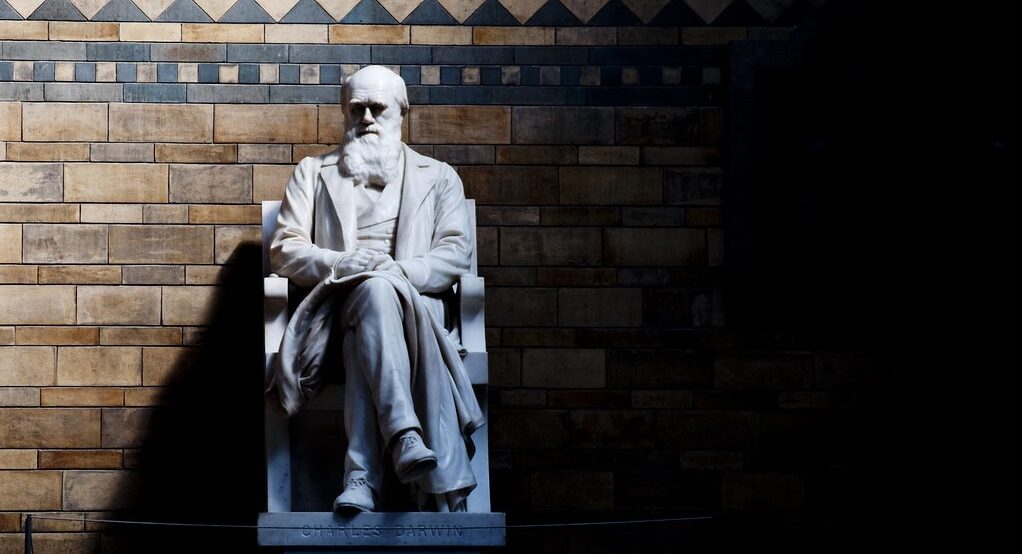By Chapter or By Topic: All > Anchors > People > Docs > Touchstones > New Looks > History > Pre-Sumer
By Chapter: Use this timeline as you read each chapter of “30 Philosophers: A New Look at Timeless Ideas.” Within this timeline, a generation is defined as spanning 25 years, aiding in the chronological arrangement and understanding of historical progressions.
30 Philosophers Timeline: Overview
30 Phil, Chapter 1 Touchstone 1 of 80: Big Bang.
Immediately following the state of the singularity, the universe entered a phase of rapid expansion and cooling, known as the Big Bang Expansion. This critical period signifies not an explosion in space but the very expansion of space itself, from an incomprehensibly dense point known as a singularity. For more, check out: The Expanding Universe Explained.
Big History Thresholds: 1=Big Bang | 2=Stars&Galaxies | 3=Chemicals | 4=Solar System | 5=First Life | 6=TI | 7=Agrarian | 8=Science
Big Bang: Threshold 1 in Big History is the creation, or beginning, of our universe.
30 Phil, Chapter 1 Touchstone 2: Free Will.
There are two basic types of Free Will. Determinism says everything that happens is set in stone and can’t be changed; in contrast, indeterminism says people and animals make choices. There are four basic types: scientific determinism, scientific indeterminism, fatalism, and providence.
30 Phil, Chapter 1 Touchstone 3: Evolution.
In 1859, the naturalist Charles Darwin revolutionized the scientific world with his seminal publication, “On the Origin of Species.” In it he formulated his scientific theory of evolution by natural selection. The process by which new species arise is well-understood. It proposed that changes in species occur gradually over time. With each generation, the offspring produce small variations, which accumulate over generations, resulting in advantages and disadvantages.
30 Phil, Chapter 1 Touchstone 4: Cultural Transmission.
Cultural transmission, perhaps more than any other trait, sets humans apart from other animals. It’s the ability to pass behaviors, traditions, and knowledge to the next generation. Cultural transmission has likely been a feature of our direct-line hominin mind for millions of years. Returning to what we have in common with chimps, both species possess this ability.
The image of the early universe that we see in the CMB reveals a time shrouded in darkness. During this era, the 17 known particles first started to combine to form the universe’s first atoms. Electrons, protons, and neutrons came together to create neutral hydrogen atoms, a process that allowed photons—or light—to traverse the cosmos freely. That is the glow we see in the CMB. Soon after this, well, cosmically soonish, gravity played its part and brought these atoms together, forming the first stars and galaxies. This “let-there-be-light” event occurred about 100 million years after the Big Bang.
Legacy: First 26 elements of the periodic table of elements.
After a few hundred million years, gravity continued to play its part, drawing atoms into an intimate collapse, giving birth to the very first stars and galaxies. These first stars, known as Population III stars, were stellar giants: massive, hot, and short-lived; they burned for just a few million years, likely with no planets to keep them company. None of these titans still illuminate the cosmos today. Their legacy is the creation of increasingly heavier elements, starting with carbon, nitrogen, and oxygen, and continuing up to iron with its 26 protons.
Big History Thresholds: 1=Big Bang | 2=Stars&Galaxies | 3=Chemicals | 4=Solar System | 5=First Life | 6=TI | 7=Agrarian | 8=Science
Stars Light Up: The formation of the first stars marked the second threshold. These stars forged the first heavy elements in their cores, which are essential for the creation of everything from planets to human life.
4.6 billion years ago, a cloud of gas and dust collapsed under the force of its own gravity to form our solar system.With the Sun at its center, glowing, the planets had not yet formed. The Sun, a G-type Population 1 star, shines brightly with a surface temperature of about 9,400 degrees, 5,500 Kelvin, and a lifespan of about 10 billion years.
Big History Thresholds: 1=Big Bang | 2=Stars&Galaxies | 3=Chemicals | 4=Solar System | 5=First Life | 6=TI | 7=Agrarian | 8=Science
Formation of Solar System and Earth: The 4th threshold is the forging of our Solar System.
The Earth and the other planets formed 4.5 billion years ago from the same cosmic cloud—the primordial material which gave birth to the Sun. The dust and comets—the rocks—were composed largely of hydrogen, ice, carbon, and nitrogen.
Likely white or grayish atmosphere: The first atmosphere developed first but was not directly involved in the development of life. The first atmosphere formed shortly after Earth’s formation around 4.5 billion years ago. This initial atmosphere was primarily composed of hydrogen and helium, the lightest and most abundant elements in the universe, which were captured from the solar nebula.
This first atmosphere was very thin and likely dissipated into space due to Earth’s weak gravitational pull at the time and the intense solar winds from the young Sun.
First DNA Life: From chemical reactions before 4 billion years ago to replicating molecules about 4 billion years ago to DNA based life then to LUCA, the only DNA based branch to survive. Meaning, DNA based life likely started before LUCA, and LUCA is the only branch to survive the test of time. From LUCA to humans, RNA and DNA are essentially the same as today. They serve as the tools for genetic information storage, transmission, and expression through prokaryotes to eukaryotes, underpinning the diversity and complexity of life on Earth. The last universal common ancestor (LUCA) is estimated to have lived approximately 3.5 to 3.8 billion years ago. It is the organism from which all current life on Earth descended from. Your greatest grandparents.
Imagined image: LUCA in a variety of shapes that they might have resembled, set in an ancient, deep-sea hydrothermal vent environment.
- Domain: Pre-Domain > Kingdom: Not applicable
(Common ancestor to the Bacteria, Archaea, and Eukaryota kingdoms)

All life today are either Prokaryote or Eukaryote. Around 2 billion years ago, Eukaryotes evolved from Prokaryotes. The evolutionary leap to eukaryotes introduced cells with a nucleus and membrane-bound organelles, a complex architecture derived from prokaryotic predecessors through endosymbiosis. This process, crucial for eukaryotic evolution, involved the incorporation of prokaryotic cells into the cytoplasm of early eukaryotes, giving rise to essential organelles like mitochondria and chloroplasts.
Mitochondria are a key component of eukaryotic cells, contributing to their ability to generate energy more efficiently than prokaryotic cells
- Domain: Eukaryota > Kingdom: Protista (or ancestral eukaryotes)
Around 1.7 billion years ago, a branch of protozoa, an advanced branch of the eukaryote cells, split into animals, plants, and fungi. These three separate lineages are the ancestors of modern plants, fungi and animals.
- 1.7 billion years ago: Plants diverge from the common protozoa ancestor.
- 1.5 billion years ago: Fungi and animal branch emerges.
- 1.3 billion years ago: Fungi diverge from the common fungi-animal ancestor.
Later animals evolve into the animal kingdom which includes mammals, birds, reptiles, amphibians, fish, insects, crustaceans, arachnids, echiniderms, worms, mollusks, and sponges.
- Domain: Eukaryota > Kingdom: Protista (or ancestral eukaryotes)
(New Kingdoms: Animalia, Plantae, and Fungi)
The Last Common Ancestor (LCA) of the Great Apes, a.k.a. the Hominidae family, marks a pivotal point in our evolutionary history, encompassing the origins of orangutans, gorillas, chimpanzees, and humans. This ancestor species, likely existing between 15 to 19 million years ago, represents the shared lineage from which all modern great apes have diverged. Current evidence suggests possible candidates for this ancestor ranging from a species within the fossil genus Proconsul from about 19 million years ago to one in the genus Kenyapithecus, dating as late as 15 million years ago. The genus Proconsul survived and evolved from about 22 million years ago to about 18 million years ago in East Africa. Also in East Africa, the genus Kenyapithecus survived and evolved from about 16 million to about 14 million years ago, specifically in Kenya.
Humans did not evolve from Chimpanzees, but both are the current evolution of a common ancestor. That common ancestor has yet to be identified and is sometimes referred to as the Chimpanzee–Human Last Common Ancestor (CHLCA). That ancestor lived in Africa about 7.5 million years ago, likely in East Africa or perhaps Central Africa. The genus that is perhaps the most likely for the CHLCA is Sahelanthropus. While much of Africa today features arid deserts, Western Africa and at least parts of Central Africa and Eastern Africa were rainforests and tropical forests during this key time of early hominin evolution.
The descendants of CHLCA are known collectively as the Hominini tribe within the larger Hominidae family. Today this tribe includes only humans, the common chimpanzee, and bonobos. Did you notice that I said CHLCA is not part of the Hominini tribe? Interestingly, scientists so far have excluded the ultimate founder of the Hominini tribe. Tribes are defined by common characteristics and because we have yet to find a CHLCA, they are left out. Since all known descendants of CHLCA, living and extinct, have the common characteristics that define the Hominini tribe, so did CHLCA. Well, that’s what I think at least. For more on why the simplest explanation gets this kind of weight in analysis, check out my Occam’s Razor: Simplifying Complexity article.
CHLCA likely lived sometime between 5 and 13 million years ago, with 7.5 million years ago being a common educated estimate. Sahelanthropus tchadensis, and other later Hominini tribe descendants, supports estimates placing the CHLCA at about 7.5 million years ago. For example, Sahelanthropus tchadensis survived from 7 to 6 million years ago in Central Africa.
NSLCA Candidate: Homo heidelbergensis, an important figure in human evolution, represents a notable advancement over its predecessor, Homo erectus and Homo antecessor. Emerging around 640,000 years ago, they exhibited a larger brain capacity, averaging about 1,100 to 1,400 cubic centimeters, which facilitated more complex thought processes and behaviors. This increase in brain size is correlated with evidence of more sophisticated tool use, particularly the development of the Levallois technique, which allowed the production of diverse and specialized tools. Unlike Homo erectus, who primarily used simple stone flakes, Homo heidelbergensis crafted tools that were pre-planned and could be retouched and reused. Physically, they were more robust than Homo erectus, with a sturdier skeletal structure that supported a larger musculature, likely an adaptation to the colder climates encountered as they spread across Europe. Furthermore, Homo heidelbergensis is credited with the earliest potential evidence of constructed shelters and the systematic use of fire, suggesting a significant leap in technological and social practices, including possibly the earliest forms of communal living and hunting strategies. These traits mark Homo heidelbergensis as a crucial intermediary between earlier hominins and later species such as Neanderthals and modern humans.
- Brain Size: 1,100 to 1,400 cc (humans=avg=1,350; 1,200 to 1,500 cc)
- Brain to Body EQ: 4.5 to 5.5 (humans=7.4 to 7.8)
- Evolved in Africa about 770,000 YA, spread to Europe by 500,000 YA.
- Spread through Africa, Europe, and Asia. Last known: Africa until about 200,000 YA.
| Male | Female | |
| Avg. Height | 5’9″ | 5’2″ |
| Avg. Weight | 136 lbs | 112 lbs |
NSLCA: The Neanderthal-Sapien Last Common Ancestor was likely Homo heidelbergensis or Homo antecessor.
Analysis: Before the discovery of Homo antecessor in the 1990s, Homo heidelbergensis was considered the primary candidate for the NSLCA due to its chronological and morphological position in the human lineage. The discovery of Homo antecessor, with its more modern-looking facial features, has intensified debates around the NSLCA’s identity. Recent scholarly speculation, influenced by the anatomical closeness of antecessor to modern humans and the larger brain of heidelbergensis, suggests a potential hybrid scenario where the NSLCA could represent a mix of traits from descendants of antecessor and contemporaneous heidelbergensis. This hybrid theory, while speculative, aligns with genetic evidence of interbreeding among Homo species.
Homo heidelbergensis first appeared in Africa around 770,000 to 650,000 years ago, while Homo antecessor emerged in Spain about 1.2 million years ago. If Homo antecessor is confirmed as our direct ancestor, this would imply that modern human features such as a flatter face and protruding nose may have evolved much earlier than previously thought, potentially as early as 1.2 million years ago. This scenario would also suggest complex migratory and evolutionary dynamics, possibly involving a back-migration of antecessor or its descendants into Africa, where the NSLCA would have emerged. This area remains a hotbed of research as new fossil discoveries continue to reshape our understanding of early human history.
Homo heidelbergensis: Long spears made hunting large animals more safe. The oldest wooden spears found so far were found in Germany and dates to circa 400,000 BCE. In fact, they are currently the oldest known wooden artifacts. The find included 3 wooden spears, stone tools, and the butchered remains of more than 10 horses.
These spears have the same qualities as modern tournament javelins and can be thrown over 200 feet. The workmanlike qualities of the heavily worked wood were similar to modern javelins where the heaviest thickest part of the spear, the center of gravity, is in the front third.
All humans today share a single grandpa, circa 275,000 BCE. We know this because all humans alive today share our ancestor’s haplogroup A genes — from our Y chromosome. He was one of many thousands of men living in eastern Africa. Many paternal lines survived for many generations but ultimately over time all the other male lineages died out. Adam’s descendants met our Eve about 100,000 years later–about 4,000 generations later.
All humans today share a single grandma, circa 175,000 BCE. We know this because all humans alive today share our ancestor’s haplogroup L genes — from our X chromosome. She was one of many thousands of women living in eastern Africa. Many maternal lines survived for many generations but ultimately over time all the other female lineages died out.
Denisovan: This bracelet dates from 70,000 to 40,000 BCE. It was discovered inside the Denisova Cave beside ancient human remains. The Denisova Cave is a cave located in Siberia, Russia. Other cave finds include woolly mammoth and woolly rhino bones. Scientists say there is evidence that the bracelet’s maker used a drill. This is the earliest known example of advanced drilling in the world.
Head of the museum Irina Salnikova said: ‘The skills of its creator were perfect. Initially we thought that it was made by Neanderthals or modern humans, but it turned out that the master was Denisovan.” This has led to speculation that these earliest humans, Denisovans, were more technologically advanced than previously thought. If true, it might be that the Denisovans were more skilled than Homo sapiens and Neanderthals of the time.
Like Neanderthal DNA, Denisovan DNA exists in modern humans. Non-African East Asians and Europeans have about 2% Neanderthal DNA. Modern Melanesians derived about 5% of their DNA from Denisovans.
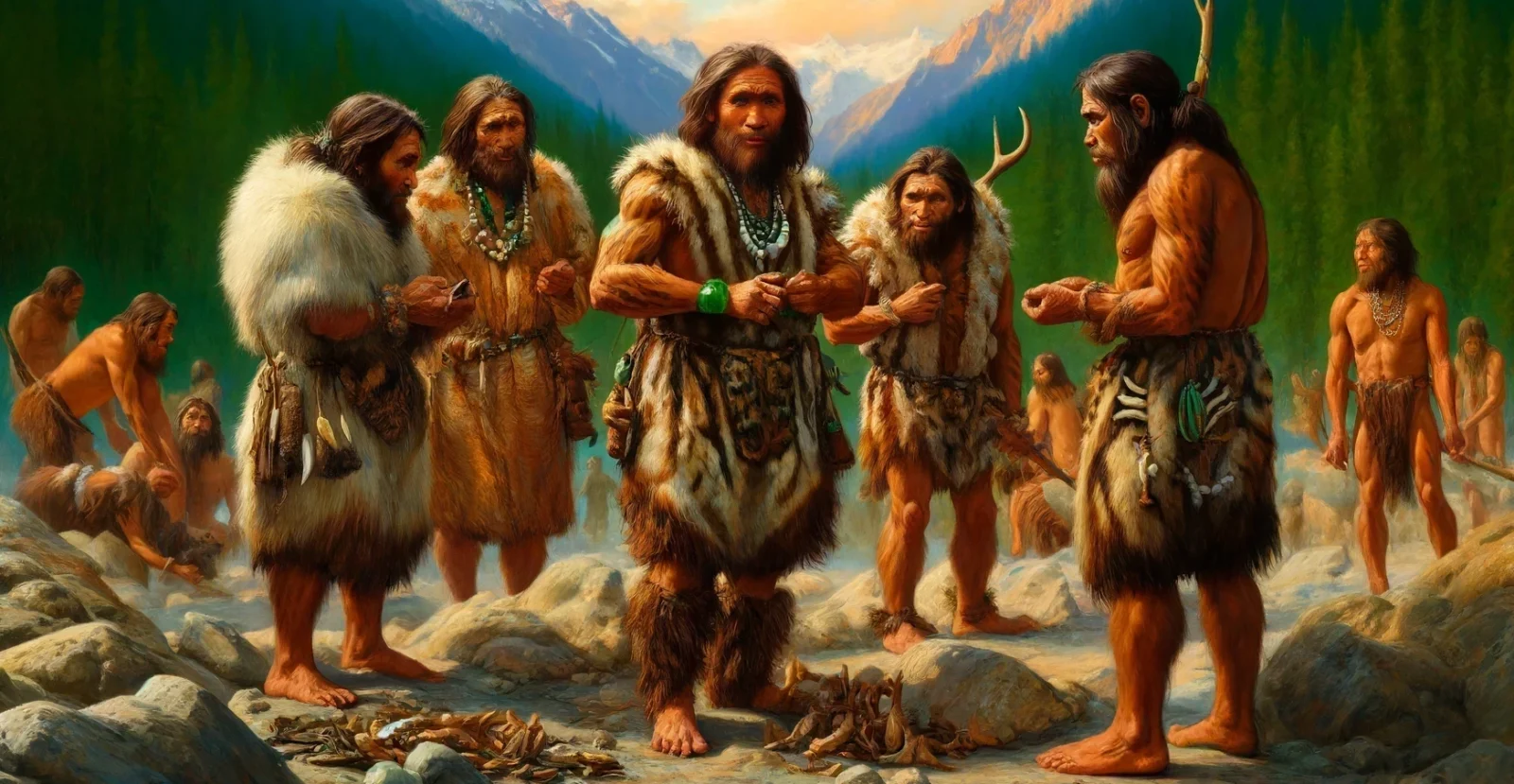
The modern human DNA evolved sometime between 71,000 and 51,000 BCE. Imagine that. A human baby born today, and a human baby born in 60,000 BCE have nearly indistinguishable DNA. There are differences but essentially humans are the same now as they were then. The popular website 23andme.com focuses on 23 changes in DNA that signify your ancestors recent migration. 23andMe.com, ancestry.com, and many others identify differences for their customers. Finally, the medical community is currently in an intense wave of identifying genetic differences that lead to medical problems with the idea of early diagnosis, prevention, and through the use of mRNA correction.
Through mtDNA sequencing, we currently believe the most recent common ancestor of all the Eurasian, American, Australian, Papua New Guinean, and African lineages dates to between 73,000 and 57,000 years ago.
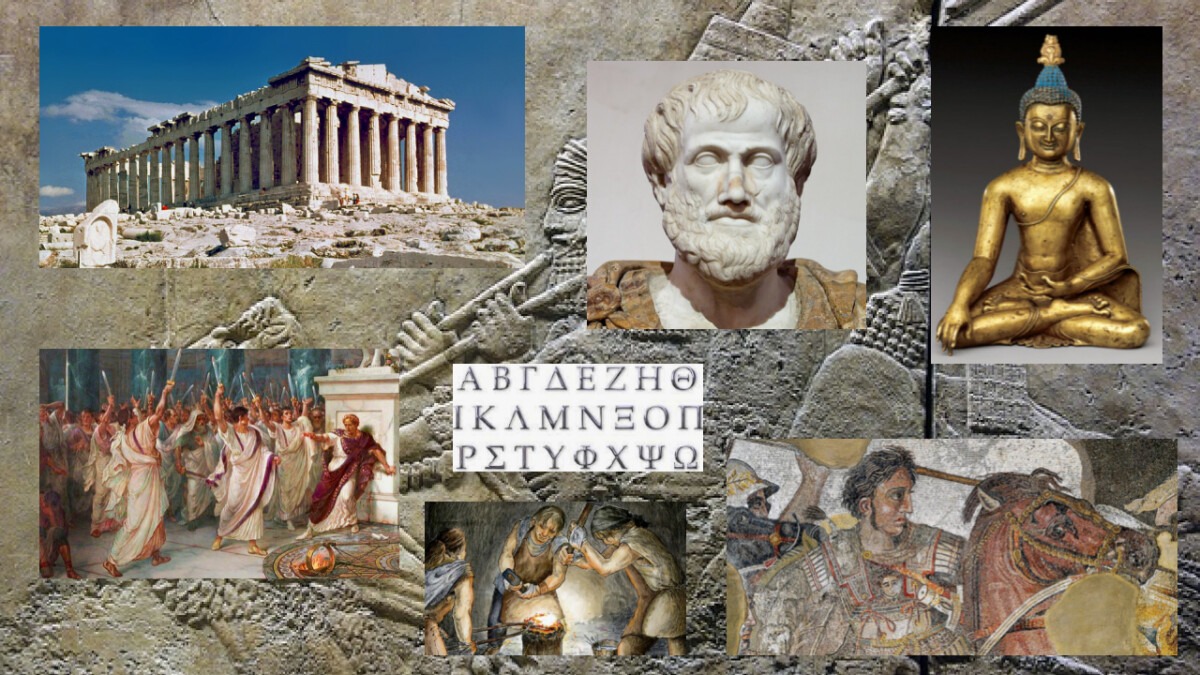
Blue eyes emerging stands out as a striking example of a genetic mutation that spread across populations. Traced back to a single individual living between 6,000 and 8,000 BCE in the region near the Black Sea. The mutation involved is a specific change in the OCA2 gene, which alters the way melanin is produced in the iris. Originally, all humans had brown eyes, but this mutation led to the reduction of melanin in the iris, resulting in blue eyes.
Earliest known writing in Africa/Middle East zone.
Human DNA today is the same as 50,000 BCE. There is no doubt there were many dozens and perhaps thousands of civilizations prior to the Sumer civilization, but Sumer is the earliest known, or at least the earliest well known. The Sumer civilization first established between 6500 and 4100 BCE. We know quite a bit about the Sumerians because they immortalized their writing in clay tablets which will be around long after all the paper books on Earth right now have deteriorated. Sadly, we know almost nothing about prior civilizations because very little evidence survived the test of time. The Sumerians spoke and wrote Sumer and starting several millennia into their civilization they started immortalizing their culture on clay. They had an advanced democracy with elected officials, religion, art, wheel, math, philosophy, and language. The Cuneiform script was in use until 100 CE.
Gilgamesh is the legendary figure whose exploits are immortalized in the “Epic of Gilgamesh.” Gilgamesh’s reign as king is shrouded in myth and history. The epic describes his journey from a tyrannical ruler to a wise and beloved king, highlighting his quest for immortality and the profound friendship with Enkidu, a wild man created by the gods to temper Gilgamesh’s arrogance. Through his adventures, which include battling monsters and seeking eternal life, Gilgamesh learns about the limits of human power and the inevitability of death. The tale, etched on clay tablets, is one of the earliest known literary works.
The Library of Ashurbanipal, established during the reign of Ashurbanipal (668–627 BCE), the last great king of the Neo-Assyrian Empire, is one of the most significant collections of ancient texts. Located in Nineveh, the capital of Assyria, this library housed thousands of clay tablets inscribed with cuneiform script, covering a wide range of subjects including literature, history, science, and law. The most famous work found in this collection is the “Epic of Gilgamesh.” Ashurbanipal, a scholar-king, collected texts from across his empire and beyond, aiming to preserve the knowledge and culture of Mesopotamia. The library’s discovery in the mid-19th century provided invaluable insights into the civilization of ancient Mesopotamia, making it a cornerstone in the study of ancient Near Eastern history.
Socrates was a Greek philosopher and is frequently credited as the founder of Western philosophy. He left no writings, but his student Plato documented his philosophy.
Some of my favorite translated sayings attributed to Socrates:
- Enjoy yourself — it’s later than you think.
- He who is not content with what they have will not be content with more.
- Do not praise someone wealthy until you known how they employ it.
- We should hear and see more than we speak.
- False words are not only evil in themselves, but they infect the soul with evil.
- He is rich who is content with the least.
- Once made equal to man, woman becomes his superior.
Democritus, known as the “Laughing Philosopher” for his emphasis on cheerfulness, lived from around 460 BCE to 370 BCE. Hailing from Abdera in Thrace, he was a pre-Socratic Greek philosopher and a central figure in the development of atomic theory. Democritus proposed that everything in the universe is composed of tiny, indivisible particles called atoms, moving through the void. His materialist philosophy challenged the prevailing views of his time, offering a mechanistic explanation of the natural world. Despite his significant contributions, much of his work survives only through the writings of later philosophers, yet his ideas laid the groundwork for modern science.
Bernard of Chartres, a prominent 12th-century French philosopher, lived around 1070 to 1130. He is best known for his influential teaching that emphasized the continuity of knowledge through the ages. Bernard is famously credited with the phrase,
“We are like dwarfs on the shoulders of giants,”
highlighting the idea that contemporary scholars build upon the knowledge of their predecessors. Bernard’s contributions significantly promoted a “dark” medieval intellectual life, known as scholasticism, that oppressed rational ideas about our empirical world.
Charles Darwin, born on February 12, 1809, and passing on April 19, 1882, was an English naturalist whose groundbreaking work laid the foundation for the theory of evolution. His voyage on the HMS Beagle and the subsequent observations he made led him to formulate his theory of natural selection, published in his seminal work “On the Origin of Species” in 1859. This theory revolutionized the biological sciences by proposing that all species of life have descended over time from common ancestors. Darwin’s meticulous research and profound insights into the natural world have had a lasting impact on science and our understanding of life’s diversity.
Regarding the quote in Chapter 1:
“We are all connected to each other biologically, to the Earth chemically, and to the rest of the universe atomically”
While I originally attributed this quote to Carl Sagan, Neil deGrasse Tyson has also spoken eloquently about the interconnectedness of our universe. Although Carl Sagan’s book Cosmos (1980) expresses similar ideas, I couldn’t verify this exact phrasing being used by him. As Sagan so poignantly wrote, “The cosmos is within us. We are made of star-stuff. We are a way for the cosmos to know itself” (Cosmos, 1980). Both Sagan and Tyson have profoundly influenced our understanding of our connection to the universe, and we acknowledge their contributions to this important idea.


